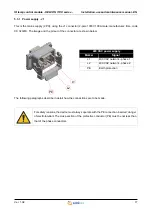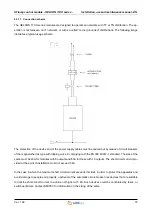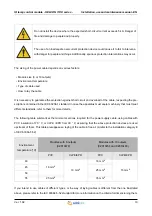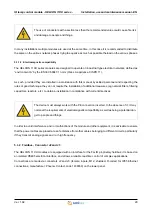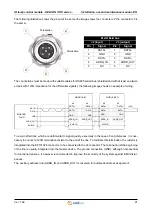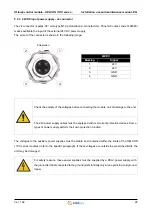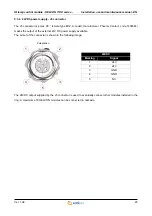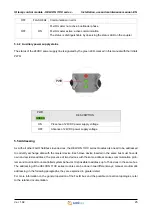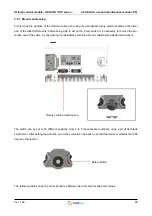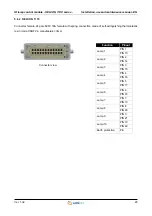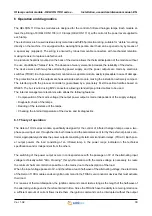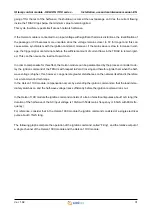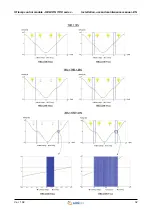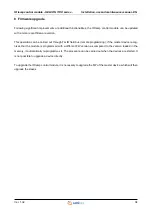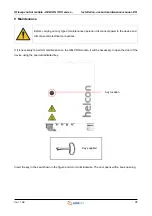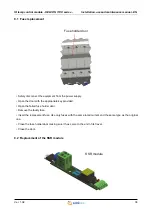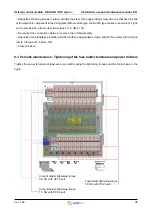
IR lamp control module - HELCON 11XX series -
Installation, use and maintenance manual - EN
Ver. 1.02
31
going off for the rest of the half wave; the shutdown occurs at the next passage on 0V as the current flowing
inside the TRIAC drops below the minimum value to remain ignited.
This cycle therefore repeats itself at each network half-wave.
If the Helcon module is connected to an input voltage with significant harmonic distortions, the identification of
the passage on 0V becomes more uncertain since the voltage remains closer to 0V for longer and this can
cause worse synchronism with the ignition command; moreover, if the mains wave is slow to increase in volt-
age, the trigger signal can terminate before the sufficient amount of current flows in the TRIAC to remain ignit-
ed. This can then cause the load not to switch on.
In order to compensate for this effect, the Helcon module can be parametrized by the process controller to de-
lay the ignition command of the TRIACs with respect to Zero Crossing and therefore ignite them when the half-
wave voltage is higher; this, however, can generate greater disturbances on the network itself and is therefore
not a recommended technique.
In the Helcon 11XX module, compensation occurs by extending the ignition command so that the load imme-
diately switches on and the half-wave voltage rises sufficiently before the ignition command runs out.
In the Helcon 11XX module the ignition command consists of a train of electrical impulses about 1 mS long (the
duration of the half-wave of the AC input voltage is 10mS with 50Hz mains frequency or 8.3mS with 60Hz fre-
quency).
For reference, consider that in the Helcon 10XX module the ignition command consisted of a single electrical
pulse about 0.15mS long.
The following graphs compare the operation of the ignition command, called “Firing”, and the relative output of
a single channel of the Helcon 10XX module and the Helcon 11XX module:

